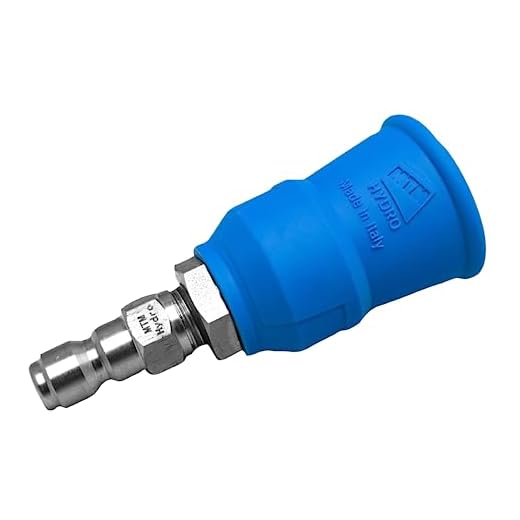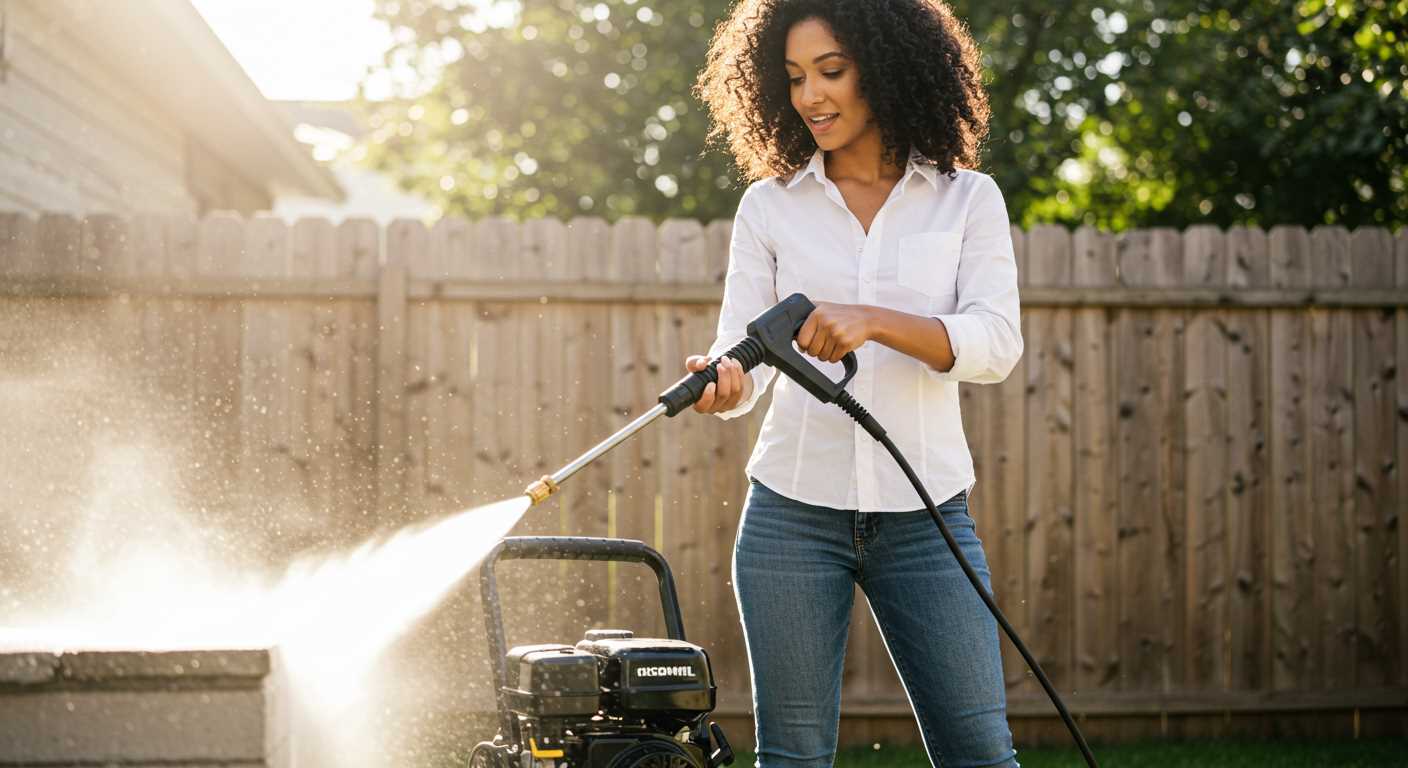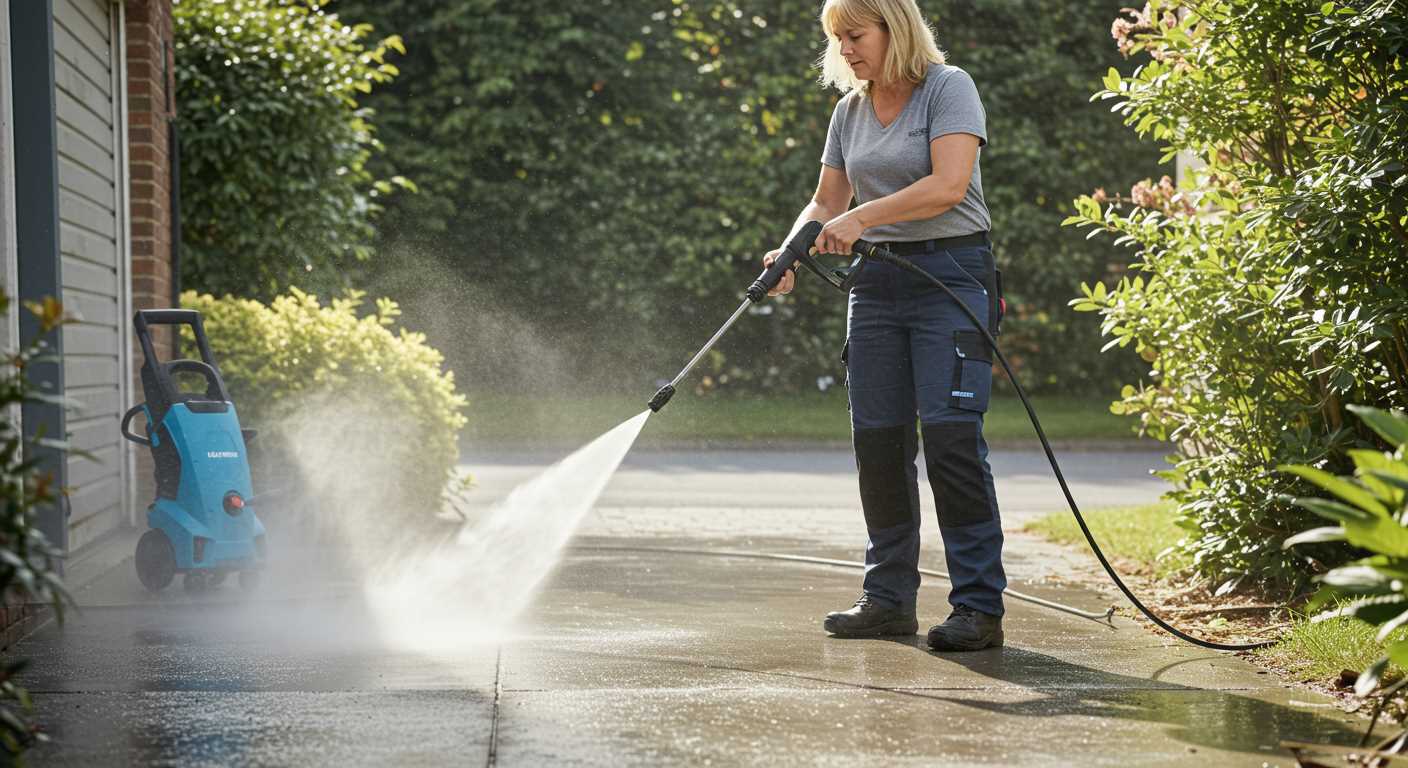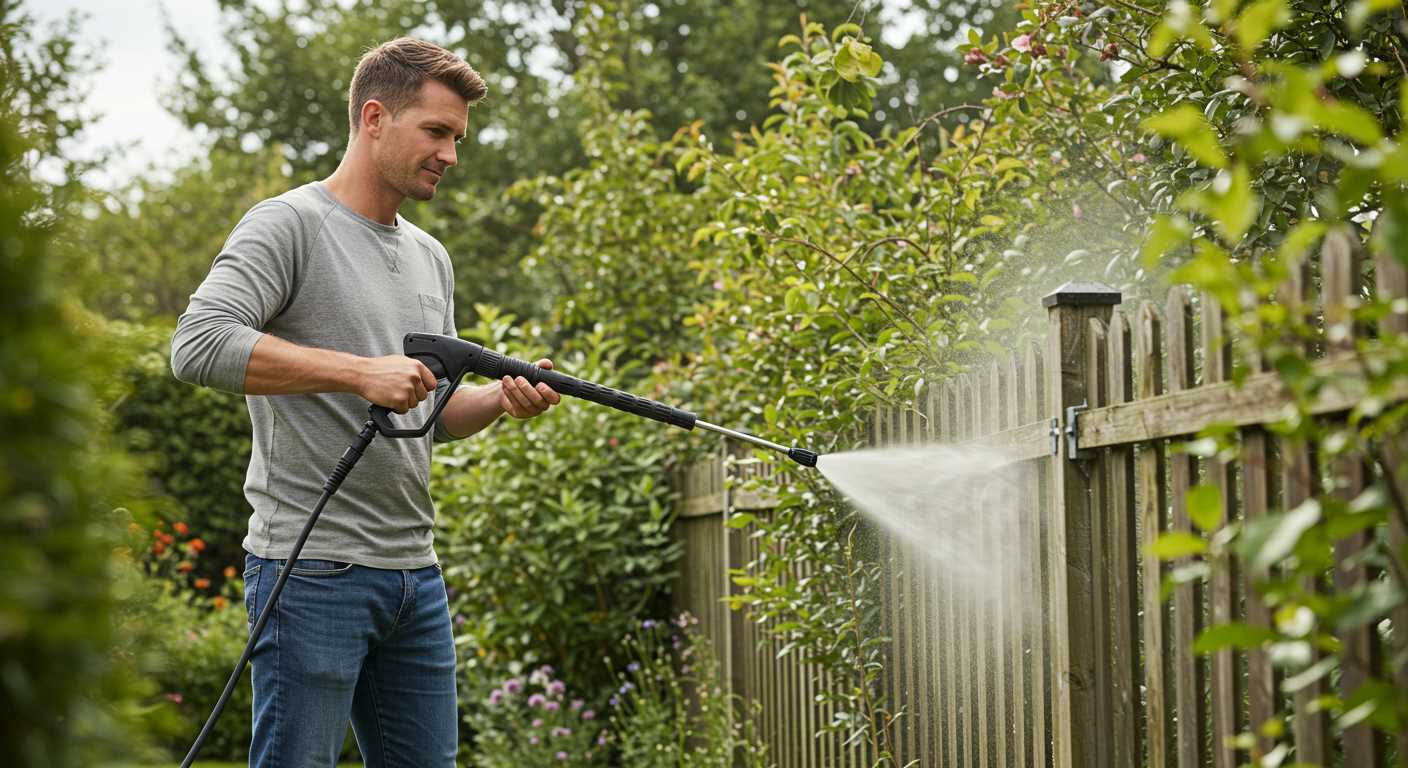



Choosing the right nozzle for your cleaning tasks makes a significant difference in performance and results. From wide spray to pinpoint precision, each attachment serves a distinct purpose. Understanding these variations is crucial for achieving optimal outcomes while ensuring your equipment operates safely.
I recommend assessing the cleaning job at hand before selecting an attachment. For extensive surfaces, a 25-degree nozzle provides a balanced spray pattern, allowing for efficient dirt removal without damaging surfaces. In contrast, for stubborn stains or heavily soiled areas, opt for a 0-degree option, delivering a concentrated jet of water that tackles tough grime effectively.
Compatibility with your equipment is another vital aspect. Not every nozzle fits every machine, so verifying specifications is necessary to guarantee a proper connection. This ensures you maximize both efficiency and safety while using your cleaning equipment.
Moreover, consider the material of the nozzle itself. Brass and stainless-steel components tend to be more durable and resistant to wear compared to plastic. Investing in high-quality materials can lead to lower long-term costs due to reduced replacements.
Making an informed decision about nozzle selection significantly impacts your cleaning projects, ensuring you achieve the best results for every task.
Understanding Pressure Washer Tips: Types and Uses
.jpg)
Choosing the correct nozzle can significantly impact cleaning efficiency and surface safety. Here’s a detailed overview of common nozzle varieties and their respective applications.
1. Nozzle Types

- 0-Degree Nozzle: Produces a concentrated jet of water, generating maximum pressure. Best for stubborn stains on hard surfaces, but caution is needed to avoid damage.
- 15-Degree Nozzle: Offers a wider spray pattern while still delivering significant force. Suitable for removing tough grime on surfaces like concrete and brick.
- 25-Degree Nozzle: Provides a moderate spray, ideal for general cleaning tasks on siding, decks, and driveways. Balances pressure with area coverage.
- 40-Degree Nozzle: Emits a wider mist, perfect for lighter tasks such as washing vehicles or delicate surfaces. Minimal pressure prevents paint or coating damage.
- Soap Nozzle: Often set at a wider angle, this nozzle facilitates the application of detergents. It’s typically used for pre-treating surfaces before rinsing.
2. Application Recommendations

- Heavy Duty Cleaning: Opt for 0 or 15-degree nozzles to tackle tough deposits.
- Medium Duty Tasks: A 25-degree option works well for larger areas needing a balance of pressure and gentleness.
- Light Cleaning: Use a 40-degree attachment for delicate items or surfaces to avoid harm.
- Pre-wash Treatment: Apply soap via the designated nozzle to better tackle grime before rinsing.
By selecting the appropriate nozzle, one can optimise cleaning performance and protect surfaces from unnecessary wear. Always assess the cleaning requirements and match them with the correct type for best results.
How Nozzle Angles Affect Cleaning Performance
Choosing the right nozzle angle dramatically impacts cleaning results. For instance, a 0-degree nozzle delivers a concentrated, high-pressure stream ideal for tough stains like grease and concrete, but misuse can damage surfaces. Use it cautiously on durable materials only.
A 15-degree nozzle provides a wider spray while still maintaining force, suitable for removing paint or stubborn stains from hard surfaces. I suggest using it on metal or masonry but avoid softer materials that might get scratched.
When utilising a 25-degree nozzle, cleaning becomes more efficient for general purposes, such as washing decks, patios, and vehicles. It balances power with coverage, making it versatile for various surfaces, including wood and glass. This angle is ideal for most residential cleaning tasks.
For delicate items, like cars or windows, a 40-degree nozzle disperses water into a gentle mist, reducing the risk of damage. It’s perfect for rinsing soap off without stripping wax or scratching paint. I always opt for this angle when dealing with fragile finishes.
Adjustable nozzles offer flexibility, allowing you to change the angle based on specific requirements. I frequently switch between degrees depending on the task, which maximises efficiency and effectiveness.
Overall, understanding how nozzle angles affect cleaning capabilities aids in achieving superior results while protecting surfaces. Always select an angle suited for the material at hand, and don’t hesitate to test on inconspicuous areas first. Make adjustments based on your observations for optimal performance.
The Role of Orifice Size in Water Flow and Pressure
The orifice size significantly influences both water flow and pressure in any cleaning system. A larger orifice allows more water to flow through, which decreases pressure. Conversely, a smaller orifice restricts water flow, leading to increased pressure but reduced volume. It’s crucial to match the orifice size to the specific cleaning task for optimal results.
Flow Rate vs. Pressure Dynamics
The relationship between flow rate and pressure is fundamental. When selecting an orifice, consider the intended application. For instance, if tackling stubborn grime on a driveway, a larger orifice may be desirable to ensure adequate flow and expedite the cleaning process. However, if precision is needed, such as washing windows or delicate surfaces, a smaller orifice enhances pressure, allowing for targeted cleaning without damaging the surface.
| Orifice Size (inches) | Flow Rate (GPM) | Pressure (PSI) | Best Use |
|---|---|---|---|
| 0.025 | 2.0 | 2000 | Heavy-duty cleaning |
| 0.035 | 3.0 | 3000 | General cleaning |
| 0.040 | 4.0 | 4000 | Light cleaning tasks |
Choosing the right orifice size not only optimises performance but also prolongs the lifespan of your equipment. Be mindful of the tasks at hand: too much pressure can lead to damage, while too little may not accomplish the desired outcomes. Test different sizes under varied conditions to ascertain the most effective setup for your specific needs.
Choosing the Right Tip for Different Surfaces

For optimal cleaning results, selecting a suitable nozzle for each surface is paramount. Hard surfaces like concrete and brick require a powerful approach; thus, a narrow-angle nozzle (15 degrees or 25 degrees) is recommended to deliver concentrated pressure. This choice ensures dirt and stains are effectively removed without damaging the surface.
When it comes to wooden decks or fences, opting for a wider angle, such as 40 degrees, is advisable. This nozzle disperses water over a larger area, reducing the risk of splintering or gouging the wood while still achieving a good clean.
For vehicles, including cars and motorcycles, use a specific foam tip or a low-pressure nozzle. This will allow for gentle application of soap and thorough rinsing without risking damage to the paintwork.
In instances involving delicate surfaces like glass, employ a low-pressure or fan tip to prevent potential breakage due to high-speed water jets. This ensures that the cleaning process is efficient while maintaining the integrity of the surface.
Specialty tips, like rotary nozzles, can be effective on stubborn grime on surfaces such as driveways, offering a powerful cleaning solution by rotating the spray pattern. This method allows for significant cleaning efficacy without requiring excessive pressure.
Ultimately, the surface type dictates the nozzle selection to ensure an effective clean while preventing unnecessary damage. Adjusting the nozzle angle and type tailored to the task can vastly improve results, making it a critical aspect of any cleaning regimen.
Common Misconceptions About Pressure Washer Tips
Many users believe that all nozzles deliver the same performance, regardless of design or shape. This assumption can lead to ineffective cleaning and possible surface damage. Misunderstanding nozzle angles is another misconception; it’s not just about how wide the spray disperses but also how concentrated the force can be. For example, a 0-degree nozzle is incredibly powerful and should only be used on stubborn stains or hard surfaces, not on delicate materials.
It’s common to think that a higher pressure always translates to better cleaning. However, this isn’t accurate when it comes to nozzle selection. The size of the orifice and angle often determine how water will perform on different surfaces. A tighter orifice may produce a more aggressive stream but can potentially etch softer materials, such as wood or painted surfaces.
Usage Versus Compatibility
Compatibility doesn’t mean uniformity. Some assume that any nozzle will fit any machine, but that isn’t always true. It’s crucial to ensure that the nozzle matches the equipment’s specifications to avoid damage. Nozzles may physically fit, but incorrect PSI ratings can lead to inefficient cleaning or, worse, equipment failure.
Cost and Quality Correlations
Another fallacy is equating price with quality. While there are premium options available, some budget-friendly nozzles perform exceptionally well. Quality control during manufacturing can be more telling than price alone. Always look for reviews and performance ratings instead of solely focusing on cost.
Maintain Your Pressure Cleaning Nozzles for Longevity
Regular cleaning of nozzles is vital. After each use, inspect them for clogs and rinse under warm water to ensure unobstructed flow. A soft brush can help dislodge stubborn debris without causing damage.
Store nozzles in a cool, dry place to prevent deformation or corrosion. Use a dedicated container to avoid physical damage. Keeping your equipment away from extreme temperatures extends the life of various components.
Occasionally, apply a light lubricant to the threads for easier attachment and detachment. Avoid heavy oils, as they might attract dirt and grime. A silicone spray works well without leaving a sticky residue.
Check the condition of the o-rings regularly. These small rubber rings can wear out over time, leading to leaks. Replace them if you notice any cracks or signs of deterioration to maintain optimal performance.
Lastly, adhere to the manufacturer’s guidelines regarding maintenance routines. Following these recommendations ensures that your nozzles perform optimally and last longer, providing consistent cleaning power when needed. Regular upkeep translates into reliability during use.
Upgrading or Replacing Pressure Washer Tips: What to Consider
Prioritise compatibility with your model before deciding on new nozzles. Each unit has specific requirements, so verify the size and connection type to avoid mismatches that can lead to inefficiencies or damage.
Evaluate the intended application as well. High-pressure settings may require upgraded options, while standard tasks might only demand basic varieties. If tackling tougher grime or larger areas, consider nozzles with different angles and orifice sizes for better performance.
Material Quality
Opt for durable materials, like ceramic or stainless steel. These resist wear and tear better than plastic alternatives, especially under high pressure, which prolongs lifespan and maintains performance over time.
Cleaning Applications
Assess the surfaces you often clean; delicate materials may need gentler options, while harder surfaces can handle aggressive nozzles without compromise. Understanding the nuances of cleaning different surfaces helps in selecting suitable attachments to achieve optimal results.








